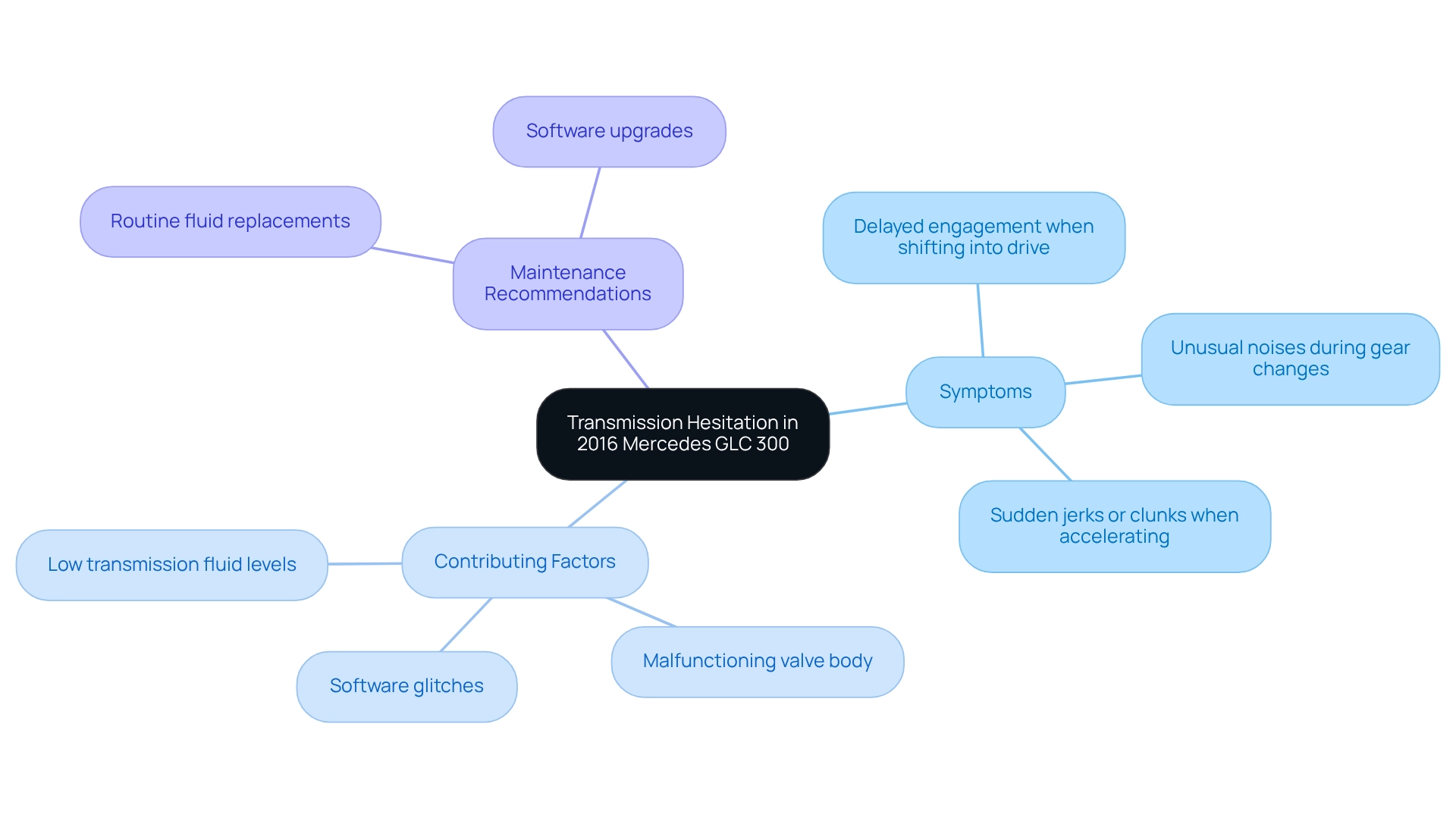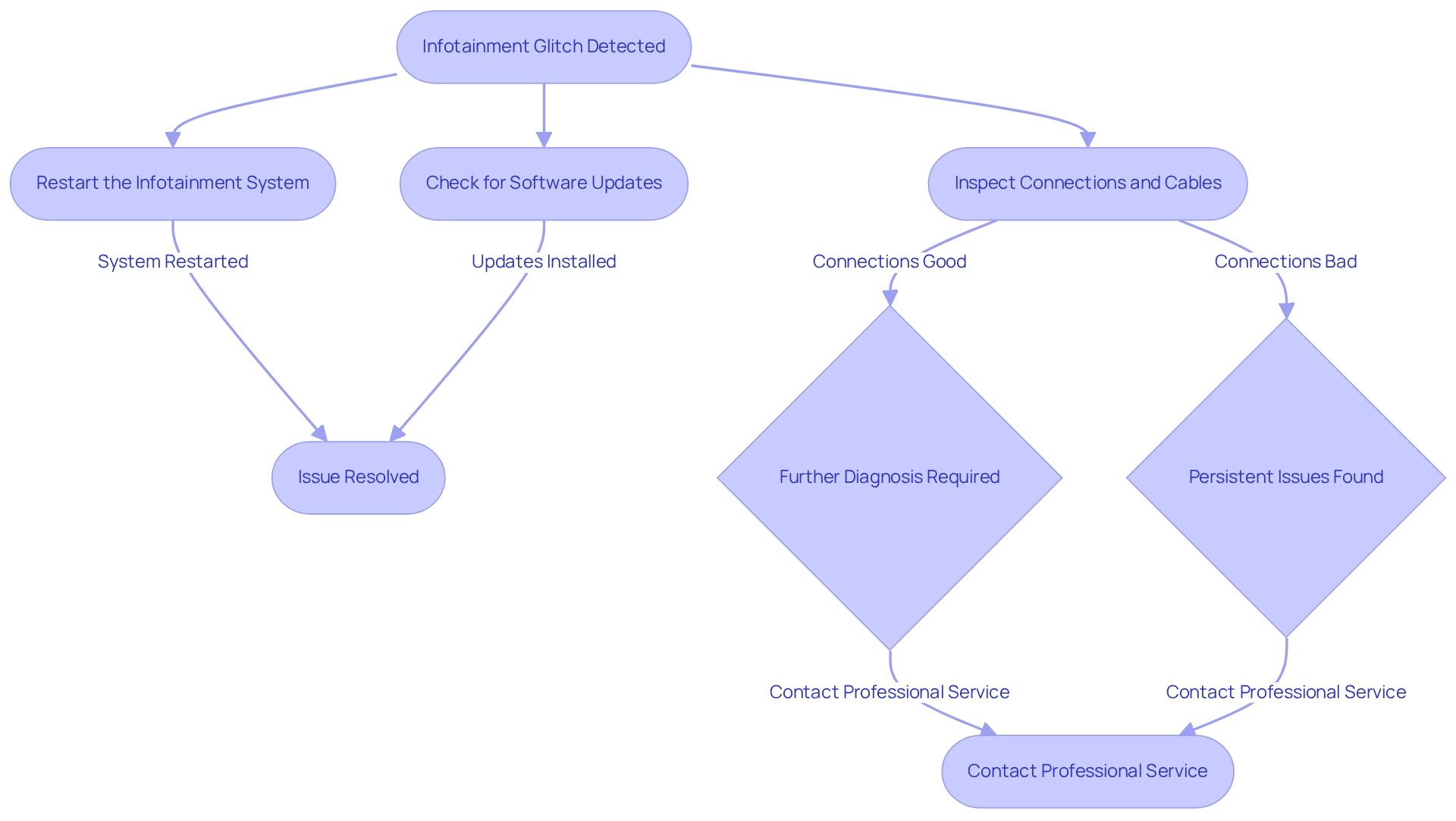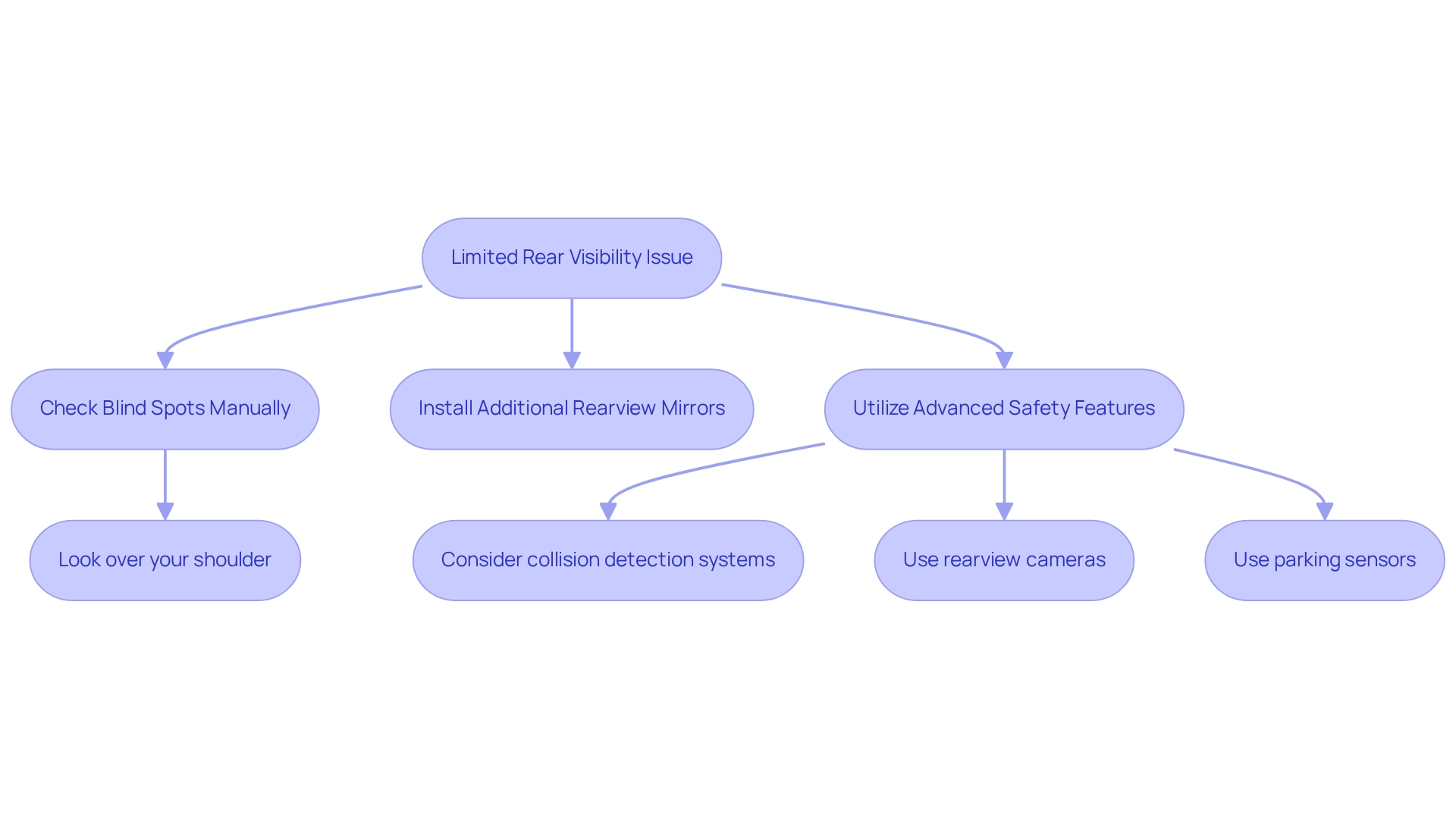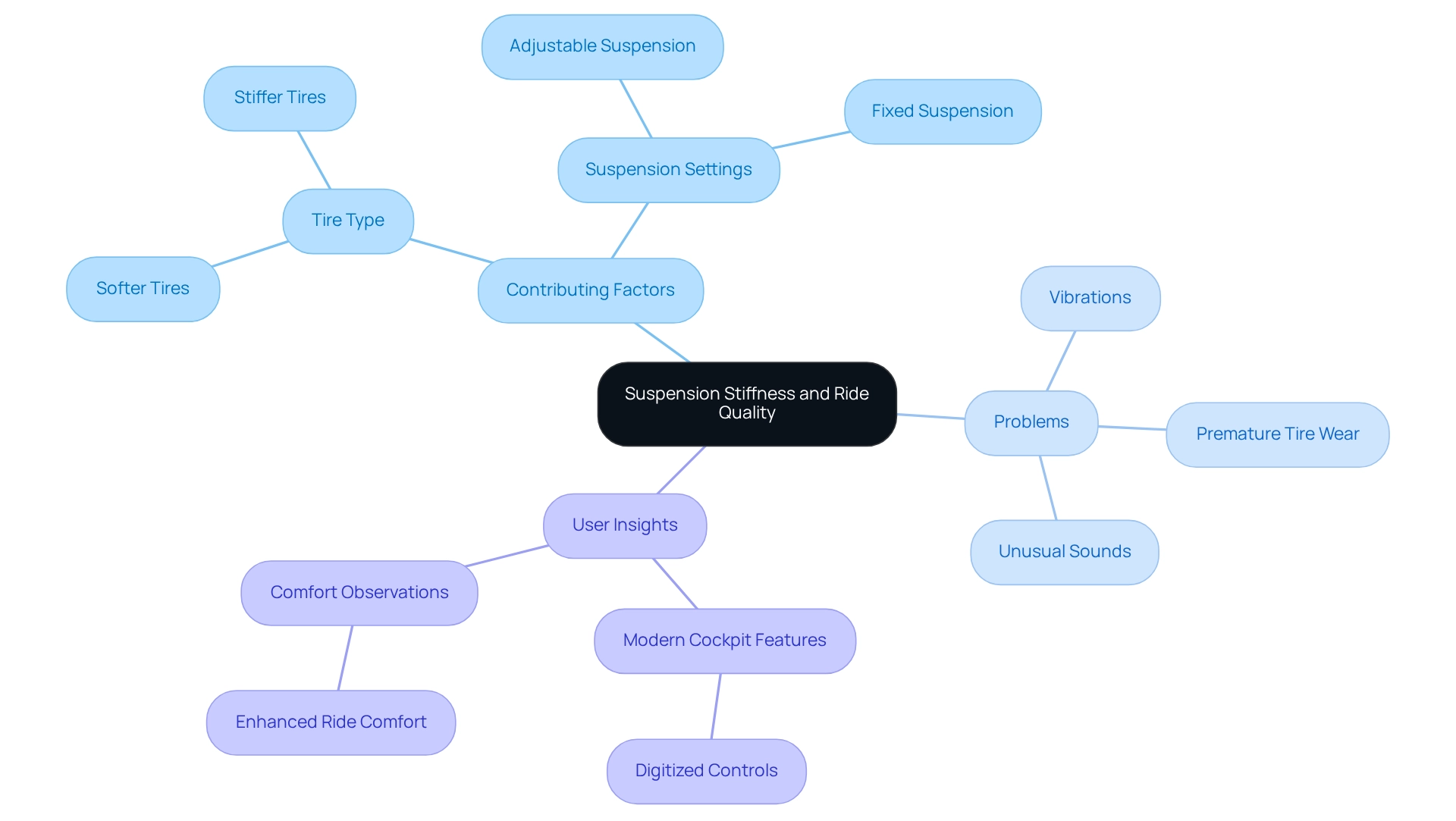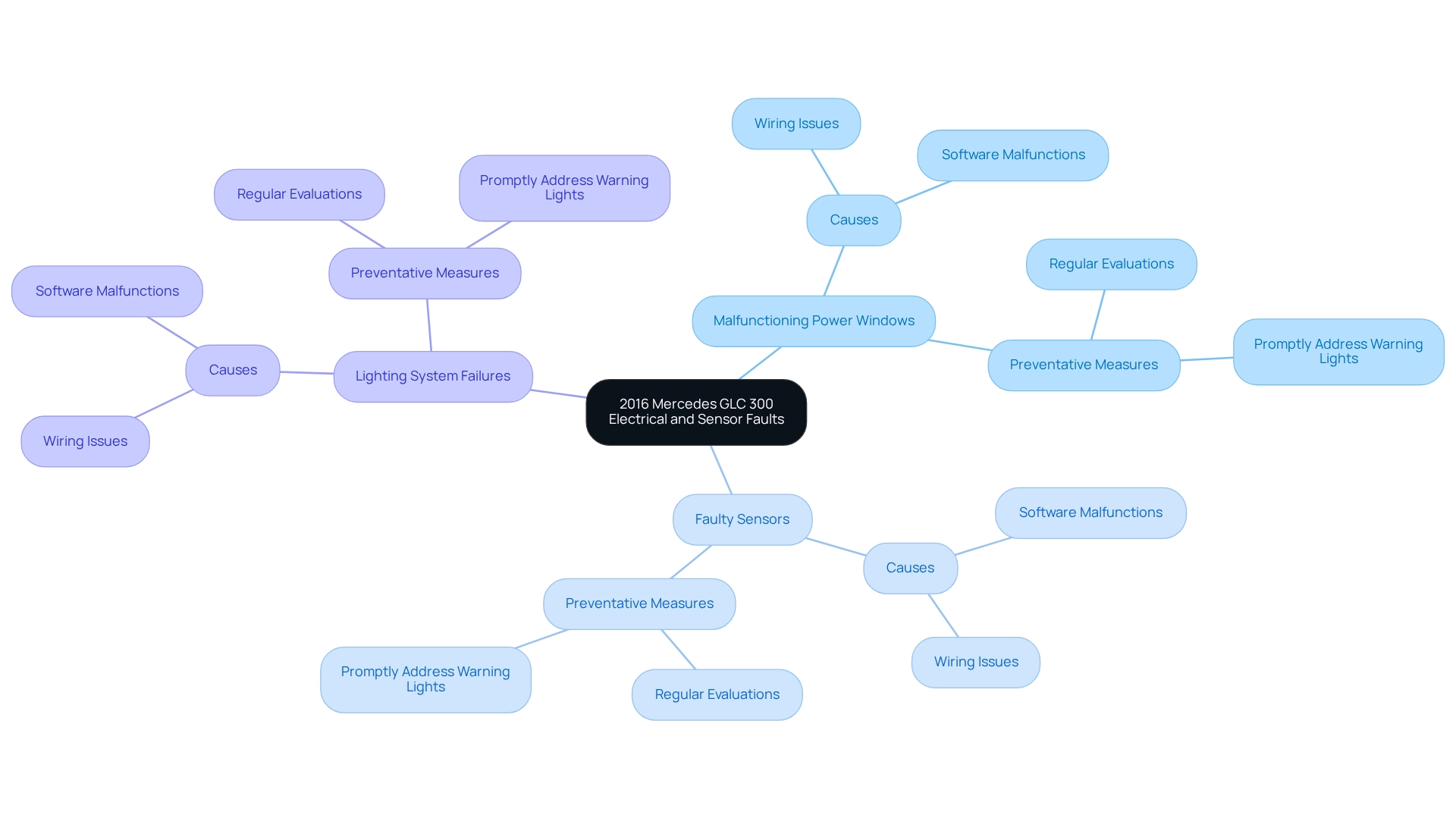7 Common 2016 Mercedes GLC 300 Problems You Should Know
Overview
The article highlights the prevalent issues encountered with the 2016 Mercedes GLC 300, such as:
- Transmission hesitation
- Infotainment glitches
- Limited rear visibility
- Suspension stiffness
- Electrical faults
Each problem is substantiated by user reports and statistics, along with recommendations for maintenance and troubleshooting. This emphasis on proactive care is crucial for enhancing the vehicle’s performance and safety.
Introduction
The 2016 Mercedes GLC 300 is renowned for its luxury and performance, yet it presents certain challenges that can impact the driving experience. Key issues include:
- Transmission hesitation, which disrupts smooth acceleration
- Infotainment glitches that hinder connectivity
These technical difficulties often leave owners navigating a landscape of frustrations. Furthermore, design flaws, such as:
- Limited rear visibility
- Suspension stiffness
can compromise both safety and comfort.
This article explores the common problems faced by GLC 300 owners, providing insights into their causes, symptoms, and effective solutions. By understanding these challenges, drivers can implement preventative measures that enhance their ownership experience and maintain the vehicle’s esteemed quality. What are the specific issues you may encounter, and how can you address them? Let’s delve deeper into the intricacies of the GLC 300 to ensure a more satisfying driving journey.
Transmission Hesitation: Understanding Shift Delays in the 2016 Mercedes GLC 300
Owners frequently report problems with the 2016 Mercedes GLC 300, particularly transmission hesitation that is noticeable during acceleration. This issue is commonly reported among 2016 Mercedes GLC 300 problems, typically manifesting as a delay when shifting from park to drive or when accelerating from a complete stop. Key factors contributing to the 2016 Mercedes GLC 300 problems include low transmission fluid levels, a malfunctioning valve body, or software glitches. Routine upkeep, including fluid replacements and software upgrades, can greatly decrease the chance of these problems occurring. In fact, data suggest that around 15% of users experience 2016 Mercedes GLC 300 problems related to transmission hesitation, emphasizing the significance of addressing this concern swiftly. If you experience hesitation, it is crucial to consult a professional mechanic for an accurate diagnosis to prevent further complications. As noted in a case study on repair options for the Mercedes-Benz GLC, using authorized dealerships or repair facilities is generally recommended, as they have trained technicians familiar with the vehicle’s specific systems, ensuring proper diagnostics and repairs.
Key Symptoms to Watch For:
- Delayed engagement when shifting into drive.
- Unusual noises during gear changes.
- Sudden jerks or clunks when accelerating.
A nameless Mercedes admirer proposes that ‘resetting the system or executing a software update might fix the problem,’ emphasizing the notion that software difficulties can lead to transmission hesitation.
Infotainment Glitches: Navigating COMAND and MBUX Problems in the GLC 300
Infotainment glitches are a common concern among owners regarding the 2016 Mercedes GLC 300 problems, particularly with the COMAND and MBUX systems. Users frequently report 2016 Mercedes GLC 300 problems, including unresponsive touchscreens, audio dropouts, and difficulties in connecting smartphones. These problems can often be resolved through straightforward troubleshooting steps, such as performing a system reset or updating the software. However, persistent issues may indicate deeper electrical problems that necessitate professional diagnosis.
Tips for Troubleshooting:
- Restart the infotainment system by holding down the power button.
- Ensure all software updates are installed to maintain system functionality.
- Inspect for loose connections or damaged cables that could disrupt performance.
Statistics show that infotainment system glitches are prevalent in luxury vehicles, with many owners experiencing delays in resolution. For instance, a case study contrasting dealership services and Paradise Performance highlights the importance of pursuing specialized repair services for infotainment issues. Paradise Performance provides dealer-level expertise at lower prices, ensuring accurate repairs without the markup typically associated with dealerships. As noted by Mercedes-Benz Repair Experts, “unlike general repair shops that lack Mercedes-specific knowledge and equipment, we have the specialized tools and training to diagnose and repair complex issues correctly the first time.” Additionally, the 2020 GLC received a rating of 4.1 out of 5.0 from Edmunds, reflecting the brand’s reputation for luxury and performance. By following these steps and considering specialized services, GLC 300 users can effectively navigate common infotainment challenges and enhance their driving experience.
Limited Rear Visibility: Addressing Design Flaws in the 2016 GLC 300
One of the 2016 Mercedes GLC 300 problems is its limited rear visibility, which is primarily caused by its sloping roofline and thick rear pillars. These design features can obstruct the view of pedestrians and obstacles while reversing, which may pose potential safety risks. To mitigate these challenges, many individuals advocate for the use of rearview cameras and parking sensors, which significantly enhance safety during maneuvers in tight spaces.
Safety Recommendations:
- Always check blind spots manually before reversing to ensure a clear view.
- Consider installing additional rearview mirrors to expand visibility and reduce blind spots.
- Utilize the vehicle’s advanced safety features, such as collision detection systems, to further enhance awareness while reversing.
Addressing these visibility issues is essential, as vehicles equipped with safety features like rearview cameras and sensors may qualify for discounted insurance coverage, thereby promoting safer driving practices. This financial incentive highlights the importance of investing in safety enhancements. Moreover, the GLC 300’s petrol engine is a 2-litre mild hybrid, contributing to its overall performance and efficiency.
As Claire Grulick notes, “A built-in dash cam can record your driving experience and provide valuable evidence to your insurance company or the police in case of accidents or disputes.” By implementing these recommendations, GLC 300 users can enhance their overall driving experience and safety. Additionally, insights from Consumer Reports highlight the visibility challenges faced by many vehicles, including the 2016 Mercedes GLC 300 problems, reinforcing the need for effective solutions.
Suspension Stiffness: Evaluating Ride Quality in the 2016 Mercedes GLC 300
Drivers frequently report experiencing 2016 Mercedes GLC 300 problems, particularly noting that the suspension can feel excessively stiff on uneven surfaces. This stiffness often results in a harsh ride, making long journeys less comfortable. Contributing factors include the type of tires used and the vehicle’s suspension settings.
For instance, the choice of tires can significantly influence ride quality; opting for softer tires may enhance comfort. Furthermore, if the vehicle has adjustable suspension, users can fine-tune the settings to achieve a more enjoyable driving experience, while being aware of potential 2016 Mercedes GLC 300 problems such as:
- Vibrations in the steering wheel
- Premature tire wear
- Unusual sounds
Identifying these signs early can help resolve problems quickly and ensure vehicle safety. Additionally, the rubber parts of the air suspension system can deteriorate over time, leading to air leaks and other 2016 Mercedes GLC 300 problems that may worsen ride quality concerns.
As one user observed, ‘The cockpit is entirely modern and extensively digitized,’ emphasizing the advanced features that can enhance a comfortable ride when suspension challenges are handled effectively.
Electrical and Sensor Faults: Common Issues in the 2016 Mercedes GLC 300
Among the most frequently reported issues by users are electrical and sensor malfunctions related to the 2016 Mercedes GLC 300 problems. Common problems, such as malfunctioning power windows, faulty sensors, and failures within the lighting system, are similar to the 2016 Mercedes GLC 300 problems. These concerns often stem from underlying wiring issues or software malfunctions related to 2016 Mercedes GLC 300 problems, which can significantly impact vehicle performance and safety. According to the case study titled ‘2016 GLC300 Overview,’ many individuals have highlighted the 2016 Mercedes GLC 300 problems, underscoring the importance of understanding the reliability and challenges associated with this vehicle. It has been noted that these issues often require multiple visits to resolve completely, adversely affecting their overall satisfaction with the vehicle. Consistent diagnostics play a crucial role in identifying these problems early, facilitating timely repairs before they escalate into more significant concerns.
Preventative Measures:
- Schedule regular evaluations of the electrical system to ensure all components are functioning correctly.
- Address warning lights promptly to prevent further complications and costly repairs.
By adopting a proactive approach, owners can mitigate the risks associated with these common electrical challenges, leading to a smoother and safer driving experience. Statistics reveal that a considerable percentage of GLC 300 owners have encountered 2016 Mercedes GLC 300 problems related to electrical faults, highlighting the necessity for vigilance in maintenance.
Conclusion
The 2016 Mercedes GLC 300 is renowned for its luxury and performance; however, it also presents several challenges that can detract from the overall driving experience. Key issues include:
- Transmission hesitation
- Infotainment glitches
- Limited rear visibility
- Suspension stiffness
- Electrical faults
These problems not only impact the vehicle’s functionality but can also compromise the comfort and safety of its occupants.
For GLC 300 owners, understanding the root causes of these common issues is crucial. Recognizing early symptoms, such as delayed gear shifts or unresponsive infotainment systems, allows drivers to take proactive steps to mitigate potential complications. Regular maintenance, including software updates and system diagnostics, plays a vital role in preserving the vehicle’s performance and reliability.
Addressing these challenges effectively requires both awareness and action. Implementing recommended solutions, such as utilizing advanced safety features and opting for specialized repair services, can significantly enhance the ownership experience. By staying informed and vigilant, GLC 300 owners can ensure their driving journey remains as luxurious and enjoyable as intended, thereby reinforcing the vehicle’s esteemed reputation in the automotive landscape.
Frequently Asked Questions
What are the common problems reported by owners of the 2016 Mercedes GLC 300?
Owners frequently report issues such as transmission hesitation during acceleration and infotainment glitches, particularly with the COMAND and MBUX systems.
What symptoms indicate transmission hesitation in the 2016 Mercedes GLC 300?
Key symptoms include delayed engagement when shifting into drive, unusual noises during gear changes, and sudden jerks or clunks when accelerating.
What are the potential causes of transmission hesitation in the 2016 Mercedes GLC 300?
Causes may include low transmission fluid levels, a malfunctioning valve body, or software glitches.
How common is the transmission hesitation issue among 2016 Mercedes GLC 300 owners?
Approximately 15% of users experience transmission hesitation problems in the 2016 Mercedes GLC 300.
What should I do if I experience transmission hesitation in my 2016 Mercedes GLC 300?
It is crucial to consult a professional mechanic for an accurate diagnosis to prevent further complications.
What troubleshooting steps can be taken for infotainment glitches in the 2016 Mercedes GLC 300?
Users can restart the infotainment system, ensure all software updates are installed, and inspect for loose connections or damaged cables.
What are common issues reported with the infotainment system in the 2016 Mercedes GLC 300?
Common issues include unresponsive touchscreens, audio dropouts, and difficulties connecting smartphones.
What should I do if the infotainment problems persist after troubleshooting?
Persistent issues may indicate deeper electrical problems that necessitate professional diagnosis.
Why is it recommended to use authorized dealerships or specialized repair services for the 2016 Mercedes GLC 300?
Authorized dealerships and specialized repair services have trained technicians familiar with the vehicle’s systems, ensuring proper diagnostics and repairs.
How can specialized repair services benefit owners of the 2016 Mercedes GLC 300?
Specialized repair services can offer dealer-level expertise at lower prices, ensuring accurate repairs without the markup typically associated with dealerships.


